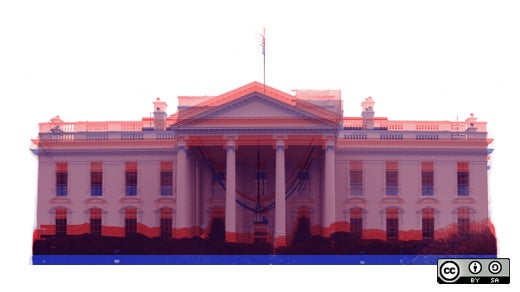The pernicious effects of closed proprietary software reaches its peak of damaging the general public when it obscures the voting process in democratic elections.
If there is one area in which the public interest calls for absolute transparency of the software and hardware used for performing data gathering, aggregation, and reporting, it is in the process of counting votes to elect public servants. In this interview, we hear from Brent Turner about how the California Association of Voting Officials (CAVO) uses open source software to bring trust back into the process of casting and counting votes during elections.

opensource.com
Tell us about yourself and California Association of Voting Officials (CAVO).
I am a California-based civil rights activist with a focus on election system security. In 2000, I became interested in reformist efforts, and in 2005 began advocating for open source (GPL) systems. Initially there was a group called Open Voting Consortium doing good work; then the California Association of Voting Officials was created.
CAVO’s mission is to oversee the deployment of publicly-owned/state-certified OS voting systems. Publicly-owned open source (General Public License) voting systems will be less expensive and more secure. Off-the-shelf commodity hardware can be utilized as well.
Tell us about the Help America Vote Act (HAVA), its origins, and what it now calls for.
HAVA was created in response to the 2000 debacle. Lobbyists Bob Ney and Jack Abramoff pushed for it, and the rest is history. Basically, America was sold a 4.5 billion dollar batch of bogus voting systems that government reports have condemned as flawed. The vendors seized the lock-in opportunity to push poorly-made and high-priced systems, and it continues to this day.
The good part of the Act was its attempt to accommodate the disability community, but that attempt failed. The disability community is still hopeful for a future technological solution.
How many of the voting sites in California today use electronic voting machines running proprietary software? What is their approximate cost to the state?
Everything is running on proprietary. There are zero open source voting systems in California, and nationally.
Microsoft and intellectual property lobbyists have completely controlled the government thus far, but change is likely on the horizon. We are witnessing the passage of SB-360 in CA, which allows us to self-certify an open source system. Apparently, then Senator, now Secretary of State, Padilla is well studied on the issue and is planning for the future. If California moves toward open source voting the rest of the country will follow.
A county the size of San Francisco spends approx. 15 million dollars every few years on new systems, whereas Los Angeles county is looking to spend upwards of 60 million dollars in the near future. Publicly-owned voting systems would save the taxpayers approximately 50% of those costs.
How are the votes counted today? What mechanisms are used to ensure the integrity of the data as it is summarized to produce final results?
Currently, it is a patchwork quilt of methods and mechanisms, with no real standards.
The entire process needs an overhaul, with the current systems junked. The are currently little to zero assurances as to integrity, mainly due to the "secret/corporate-owned" software and the poorly designed systems. Some "academics" have stated "open source is no panacea" which is a meaningless statement. We persist open source to be a necessary component of an appropriate voting system. It must be General Public License for obvious reasons.
We advocate for a simple ballot printing system with open source barcodes on the ballot for mass tabulation. Precinct counting, which is merely adding up the precincts, is optimal.
Tell us about the open voting systems that CAVO is developing and how they use open source software.
CAVO is currently providing jurisdictions with education regarding systems and possible necessary legislation. The system that were demonstrated by Open Voting Consortium are a good example of a proper poll site system. For back end information, see the web or contact CAVO engineers. This is basically an open source voting system, (under the GPL license), as it was demonstrated by OVC at Linuxworld 2008.
How can the open source community help support your efforts working towards the adoption of open voting systems?
Please contact me by email. This is still incubating, and there is much to be done.







2 Comments